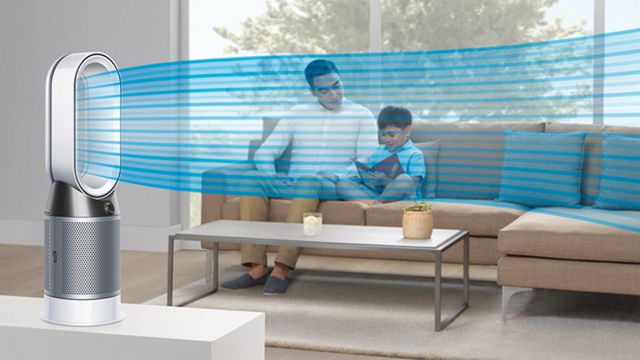
Indoor air quality is a critical aspect of maintaining a healthy living environment. With the rise of pollutants and allergens inside homes, having a high-efficiency air purifier has become an essential tool for improving air quality.
This article explores the science behind air purifiers and how they enhance indoor air quality, focusing on technologies that align with the advanced features found in many modern air purifiers.
Understanding Indoor Air Pollution
Indoor air pollution is a complex issue that arises from various sources. Common pollutants include particulate matter (PM), volatile organic compounds (VOCs), gases like nitrogen dioxide (NO₂), and allergens such as pollen, dust mites, and pet dander. These pollutants can originate from everyday activities like cooking, and cleaning, and even from building materials and furnishings.
Research indicates that indoor air quality can often be worse than outdoor air quality, especially in well-sealed homes where pollutants can accumulate. This underscores the need for effective air purification solutions to mitigate health risks associated with poor indoor air quality.
How Air Purifiers Work
Air purifiers are designed to remove pollutants from the air, thereby improving indoor air quality. They typically consist of a fan and one or more filters. The fan draws air into the device, where it passes through the filters that capture and neutralize pollutants before circulating the cleaned air back into the room.
Key Components of Air Purifiers
- HEPA Filters: High-Efficiency Particulate Air (HEPA) filters are a cornerstone of air purification technology. They are capable of trapping particles thus making them highly effective at capturing dust, pollen, and other fine particles that can exacerbate allergies and asthma.
- Activated Carbon Filters: These filters are essential for removing gases and odors. They work by adsorbing VOCs and other gaseous pollutants, which are common in household environments.
- Additional Technologies: Some advanced air purifiers incorporate additional technologies to enhance air cleaning capabilities. For instance, certain models use catalytic filters to break down formaldehyde, a harmful VOC, into harmless substances.
Advanced Features Enhancing Air Purification
Modern air purifiers are equipped with features that significantly improve their efficiency and user experience. These features include:
- Air Multiplier Technology: This technology amplifies airflow, ensuring that purified air is distributed evenly throughout the room. It creates a consistent flow of clean air, which is crucial for maintaining uniform indoor air quality.
- Real-Time Air Quality Monitoring: Many air purifiers now come with sensors that detect and display real-time air quality levels. This feature allows users to monitor pollutant levels and adjust settings accordingly to ensure optimal air purification.
- Smart Connectivity: Integration with mobile apps and smart home systems allows users to control their air purifiers remotely. This connectivity enables real-time monitoring and control, providing convenience and ensuring that the air purifier operates efficiently even when the user is not home.
- Humidifying Air: Some advanced air purifiers such as the Dyson air humidifier also feature built-in humidifiers, which add moisture to the air while purifying it. This is especially beneficial in dry environments, as it helps maintain optimal humidity levels, preventing dry skin, irritated respiratory passages, and other issues associated with dry air. By combining air purification with humidification, these devices enhance overall indoor air quality and comfort.

Benefits of Using Air Purifiers
The use of air purifiers offers numerous health benefits, particularly for individuals with respiratory conditions or allergies. By reducing the concentration of airborne pollutants, air purifiers can:
- Alleviate Allergy and Asthma Symptoms: By removing allergens such as pollen, dust mites, and pet dander, air purifiers can potentially help reduce symptoms in allergy sufferers and those with asthma.
- Reduce Exposure to Harmful Gases: Activated carbon filters and other advanced technologies effectively remove VOCs and other harmful gases, reducing the risk of respiratory issues and other health problems.
- Improve Overall Health: Cleaner air contributes to better respiratory health and can enhance overall well-being. Studies have shown that improved air quality can lead to better sleep, increased productivity, and a general sense of well-being.
A Cleaner and More Breathable Home Space With Air Purifiers
Air purifiers play a vital role in maintaining healthy indoor environments by effectively removing pollutants and allergens. The science behind these devices involves a combination of filtration technologies and innovative features that ensure efficient air cleaning.
As awareness of indoor air quality issues grows, the demand for effective air purification solutions will continue to rise, making air purifiers an essential part of modern living spaces.
By understanding the science behind air purifiers, consumers can make informed decisions to improve their indoor air quality and protect their health.





